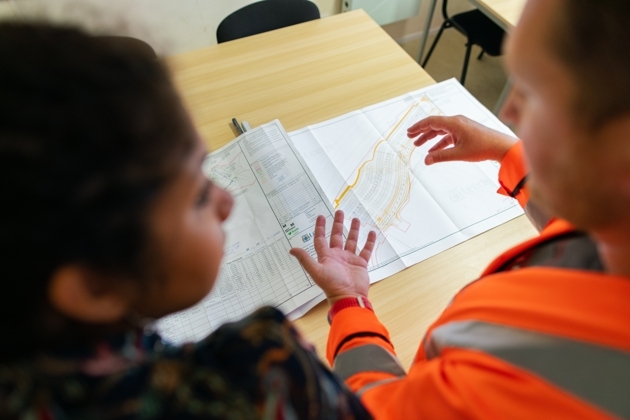So, you’re planning out your home remodeling project. You think it would be a fantastic idea to remove an interior wall and create an open floor plan living.
Before you go wielding a sledgehammer and start knocking down the wall, you must make some decisions. In this post, we’ll explore four critical factors to consider before you undertake the wall removal project.
Each of these factors alone may play a significant role in determining if you should DIY or hire a pro.
Four benefits of removing an interior wall
Before we go any further, let’s look at some of the reasons why you would want to remove an interior wall in the first place.
- Create an open plan living arrangement – This is the most common reason why homeowners opt to remove an interior wall. Modern home designs often feature open plan living arrangements where the distinction between separate “rooms” or spaces is not as clearly defined as was in previous eras where there were clearly defined living rooms, kitchens, dining rooms, rumpus rooms, and so on.
- Allow natural light to flow into a previously dark space within the home. This also gives the added benefits of more warmth in that section of the home.
- Improve the functionality of the space. By removing an interior wall, you increase the new space’s potential furniture configuration, allowing for lifestyle-friendly configuration.
- When building an extension on the home
Now that we’re aware of the benefits, let’s take a look at what we need to consider before we dive headfirst into the wall removal project.
Critical factor number 1 – Wall type
Interior walls can be categorized as load-bearing or non-load-bearing walls. Whether the wall is load-bearing or non-load bearing will often be the determining factor as to whether or not the project goes ahead, especially if you’re on a tight budget. Please know that removing a non-load-bearing wall can become a costly affair.
 Load-bearing walls
Load-bearing walls
Simply put, load-bearing walls play an integral role in supporting the structures above the wall, be that a roof or, in the case of multistory homes and apartments, the floor above.
Removing these walls will require the contractor to build additional support mechanisms, like columns and beams. Those beams provide adequate support to the above structure. Such a job is beyond the scope of a typical DIYer.
Also, it involves consultation with the builders and building engineers. These pros ensure that adequate measures are in place during and after the project to ensure your home’s structural integrity is not compromised.
Non-load bearing walls
Unlike load-bearing walls, non-load bearing walls, also known as partition walls, play no role in supporting the above structures. They are simply there to separate a section of your home into smaller spaces. Since they play no role in the home’s structural integrity, non-load-bearing walls can be removed by any competent DIYer.
Critical factor number 2 – Utilities
Another important factor to consider is the presence of utilities within the wall cavity. Utilities such as water pipes, gas pipes, electrical wires, air conditioning ducts, television cables, etc., can often be found within interior walls’ cavities. The presence of these utilities will add another layer of complexity to your wall removal project. It’s important to consider where such utilities will be relocated to.
Perhaps there is an adjacent wall they can be moved to? Or perhaps they can go underneath the subfloor? Moving certain utilities can be dangerous and best be performed by a licensed contractor, another cost to factor into your budget.
Critical factor number 3 – Wall material
The type of building material used to construct the wall is another factor to consider, which will impact the complexity and, thereby, the project’s cost. Simple plasterboard and treated pine framed walls are fairly straightforward and easy enough for a DIYer to remove without much hassle and without any specialized equipment.
Many older homes feature hardwood timber frames with lathe and solid plaster walls. These walls will take longer to remove, and the demolition process will generally be much messier than the former.
Masonry walls are also commonplace in many homes. These walls will often require the usage of some heavy-duty demolition equipment, which you may be able to hire from your local tool hire shop. Be prepared to spend considerably more time removing such walls if you decide to remove masonry walls DIY.
Critical factor number 4 – Cost of removing an interior wall
The final and perhaps the most important factor to consider is the cost of the project. The cost to remove a wall will vary considerably depending on the above factors. Additionally, you should add in the costs of materials and labor in your specific location. You can definitely save a substantial amount of money by doing the project yourself. However, as mentioned previously, sometimes the nature of the project is beyond the scope of the DIYer.
So first, learn how much your specific project will cost. Call contractors in your local area and ask them for a detailed itemized quote on your specific wall. Use this information to choose the best plasterer, electrician, plumber, builder, etc., for your wall removal project.
 The Takeaway: Removing an interior wall requires forethought and planning
The Takeaway: Removing an interior wall requires forethought and planning
Now that you’ve read through this post, you’ll have a better idea of the potential complexities of removing an interior wall. By now, you know you must take a moment to analyze and evaluate a little before undertaking such a potentially complex project. It’s not always as easy as the reality remodeling TV shows make it out to be.
If you find out that your masonry wall, which contains many utilities and is load-bearing, will cost a small fortune to remove, perhaps you may want to consider reallocating that portion of your budget to another remodeling project such as your bathroom, kitchen, or landscaping instead.

